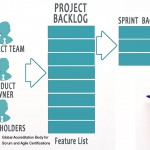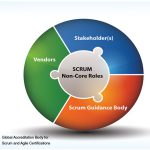A Product Owner’s role is one of three core roles in Scrum. Together with a Scrum Master and the development team, a Product Owner can be considered one of three legs that make a tripod. A good Product Owner is crucial to the success of a Scrum project.
The Product Owner plays a crucial role by representing the interests of the stakeholder community to the Scrum Team. The Product Owner is responsible for ensuring clear communication of product or service functionality requirements to the Scrum Team, defining Acceptance Criteria, and ensuring those criteria are met. In other words, the Product Owner is responsible for ensuring that the Scrum Team delivers value. The Product Owner must always maintain a dual view. He or she must understand and support the needs and interests of all stakeholders, while also understanding the needs and workings of the Scrum Team. Because the Product Owner must understand the needs and priorities of the stakeholders, including customers and users, this role is commonly referred to as the Voice of the Customer.
The other responsibilities of a Product Owner are:
- Determining the project’s initial overall requirements and kicking off project activities; this may involve interaction with the Program Product Owner and the Portfolio Product Owner to ensure that the project aligns with direction provided by senior management.
- Representing user(s) of the product or service with a thorough understanding of the user community
- Securing the initial and ongoing financial resources for the project.
- Focusing on value creation and overall Return on Investment (ROI).
- Assessing the viability and ensuring the delivery of the product or service.
As the representative of the customer, the Product Owner is said to be the Voice of the Customer as he ensures that the explicit and implicit needs of the customer are translated into User Stories in the Prioritized Product Backlog and later on used to create project Deliverables for the customer.









